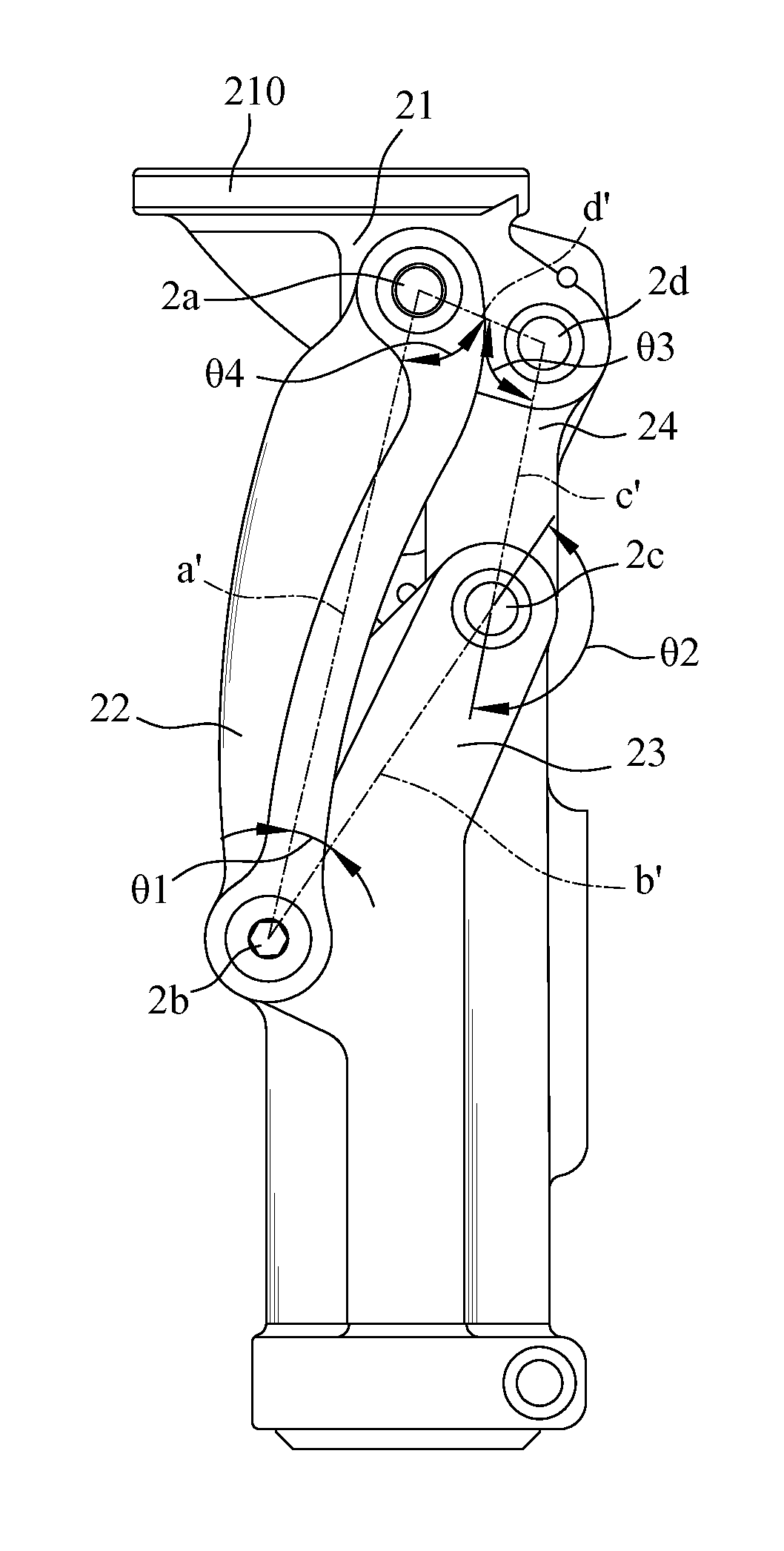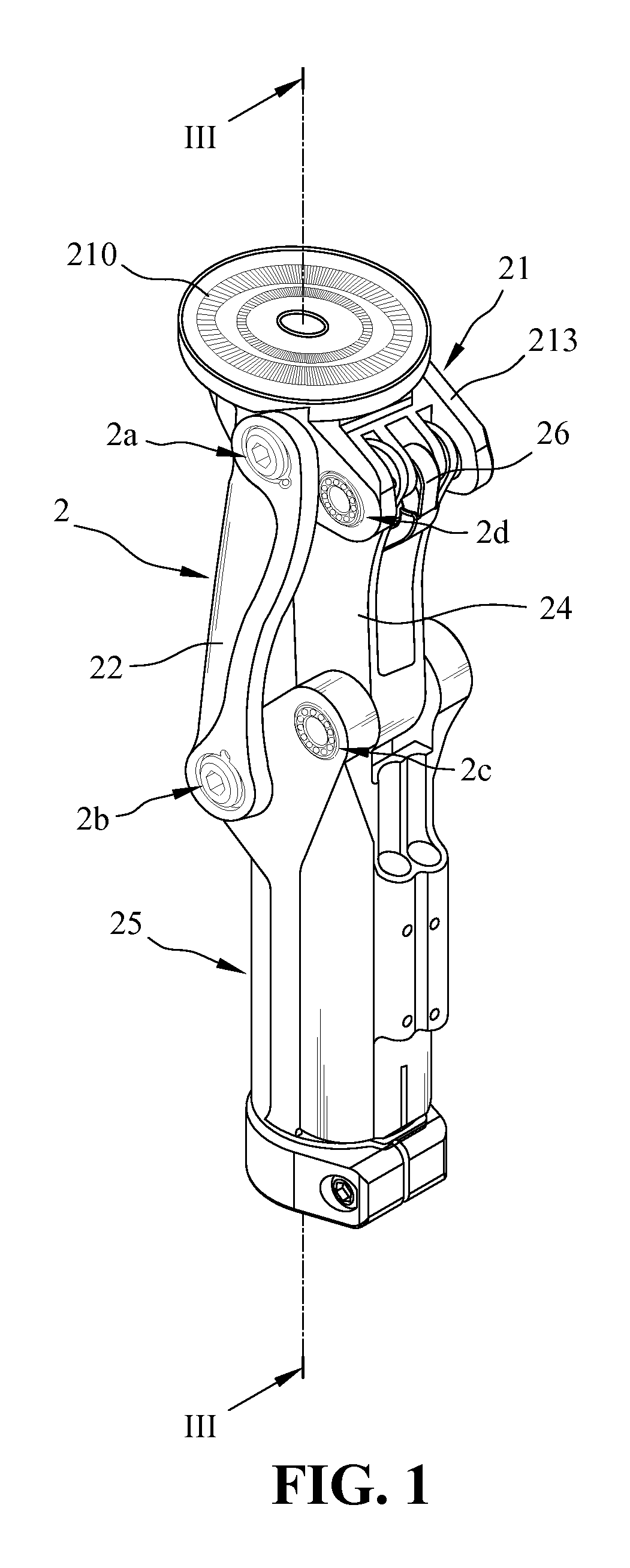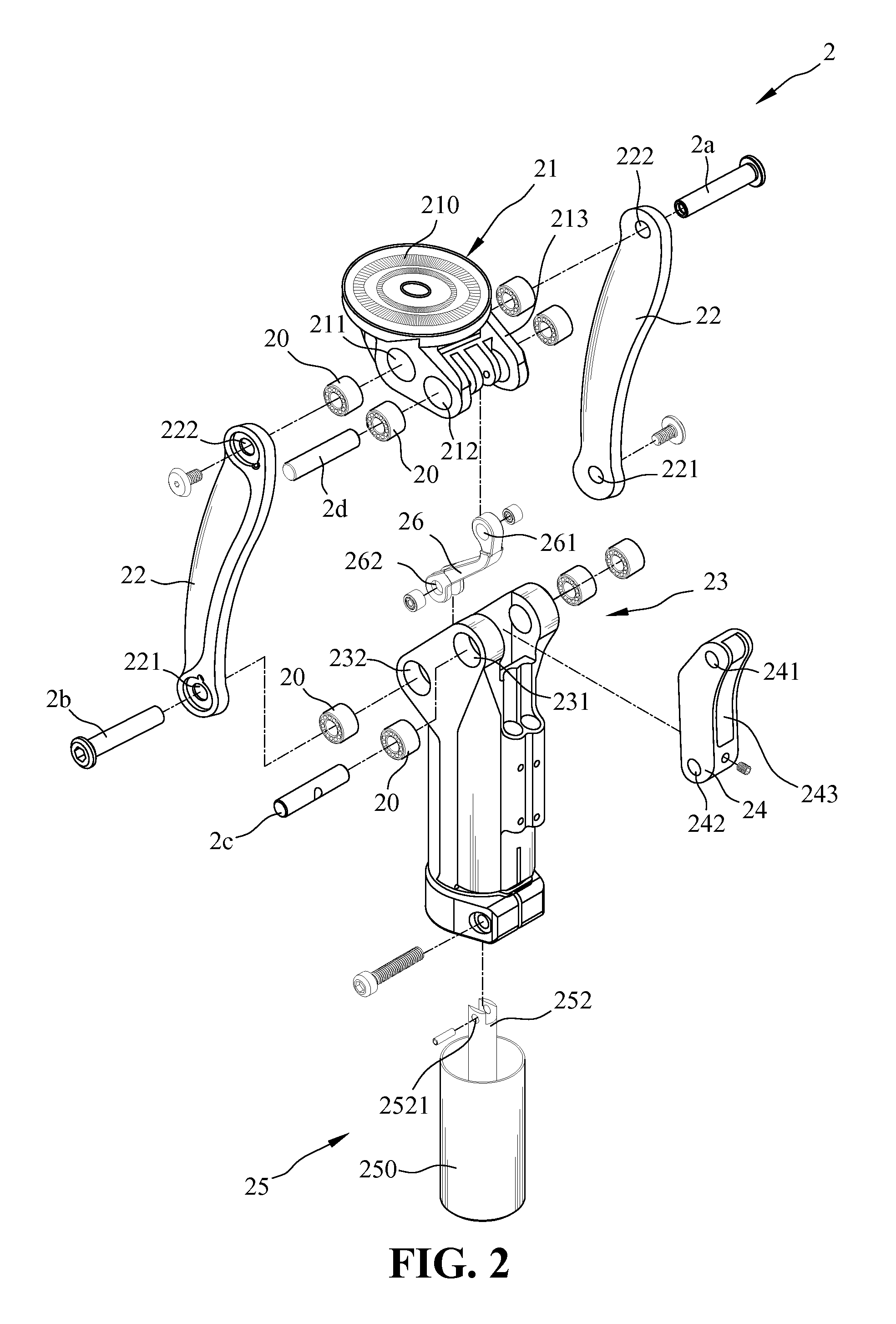Artificial knee joint
- Summary
- Abstract
- Description
- Claims
- Application Information
AI Technical Summary
Benefits of technology
Problems solved by technology
Method used
Image
Examples
Embodiment Construction
[0023]FIG. 1 is a perspective view of an artificial knee joint according to an embodiment of the present invention. FIG. 2 is an exploded perspective view of the artificial knee joint according to the present invention. The artificial knee joint according to the present invention comprises a four-bar linkage 2, an extension bar 26 having a first end pivotally connected to the four-bar linkage 2, and a restoring device 25 assembled to a bottom of the four-bar linkage 2. The restoring device 25 comprises a transmission rod 252 having a first end pivotally connected to and retractably moving a second end of the extension bar 26. The four-bar linkage 2 comprises a first connecting bar 21, a second connecting bar 22, a third connecting bar 23, and a fourth connecting bar 24. The first connecting bar 21 has two symmetrical sidewalls 213 spaced apart from each other. The two sidewalls 213 each have an opposite first pivot A-hole 211 and an opposite pivot B-hole 212. The first connecting ba...
PUM
 Login to View More
Login to View More Abstract
Description
Claims
Application Information
 Login to View More
Login to View More - R&D
- Intellectual Property
- Life Sciences
- Materials
- Tech Scout
- Unparalleled Data Quality
- Higher Quality Content
- 60% Fewer Hallucinations
Browse by: Latest US Patents, China's latest patents, Technical Efficacy Thesaurus, Application Domain, Technology Topic, Popular Technical Reports.
© 2025 PatSnap. All rights reserved.Legal|Privacy policy|Modern Slavery Act Transparency Statement|Sitemap|About US| Contact US: help@patsnap.com



